Search
Remove Ads
Advertisement
Summary 
Loading AI-generated summary based on World History Encyclopedia articles ...
Search Results
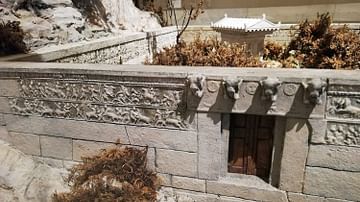
Article
The Heroon of Trysa: A Lycian Tomb Reappears
The Heroon of Trysa was the tomb of a powerful Lycian dynast surrounded by a precinct wall covered with remarkable mythological friezes. It was discovered in 1841 CE when a Polish-Prussian school teacher and classical philologist, Julius...
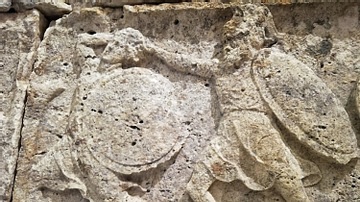
Image
Heroon of Trysa - Detail
Detail of battling warriors from the west wall of the Heroon of Trysa frieze in the Ephesos Museum, Vienna. The Heroon of Trysa dates to 380 BCE and was discovered in 1841 CE by an Austrian school teacher, Julius August Schönborn. A heroön...
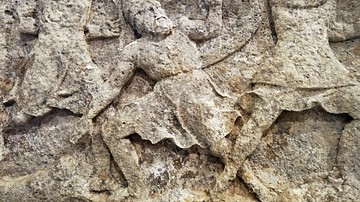
Image
Seashore Battle, Heroon of Trysa
Detail of a seashore battle scene from the west wall of the Heroon of Trysa in the Ephesos Museum, Vienna. The Heroon of Trysa dates to 380 BCE. A heroön is defined as a shrine constructed in the Classical world over and around the tomb...

Image
Model of the Heroon of Trysa
The Heroon of Trysa as it appeared in 1841 CE; a model of the Lycian site in the Ephesus Museum, Vienna, Austria. The Heroon of Trysa is the modern name for an ancient tomb, built around 380 BCE in Trysa, in ancient Lycia in southwest Turkey...
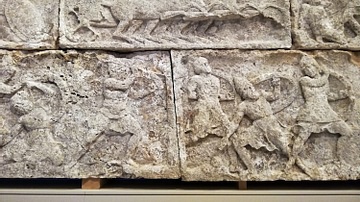
Image
Battle Scene from the Heroon of Trysa
Detail of a seashore battle scene from the west wall of the Heroon of Trysa in the Ephesos Museum, Vienna. The Heroon of Trysa is an ancient Lycian tomb dating to 380 BCE. Trysa is a site in southwest Turkey.
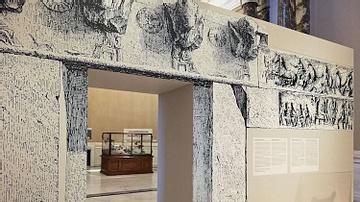
Image
Reconstruction of the Entrance to the Heroon of Trysa
Reconstruction of the entrance to the Heroon of Trysa at the Ephesos Museum in Vienna, Austria. The Heroon is an ancient tomb dating to 380 BCE which was discover in 1841 CE in Lycia, in southwest Turkey.
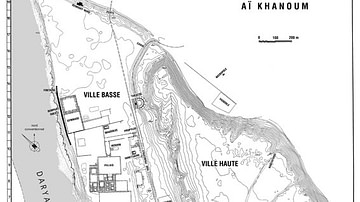
Article
Ai Khanum, the Capital of Eucratides
Ai Khanum (also spelled Ai-Khanoum or Ay-Khanum, lit. “Lady Moon” in Uzbek), was founded in the 4th century BC, following the conquests of Alexander the Great and was one of the primary cities of the Greco-Bactrian kingdom. The site is located...
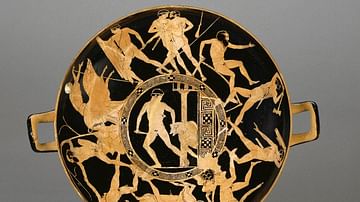
Definition
Theseus
Theseus is a legendary hero from Greek mythology who was considered an early king of Athens. Famously killing villains, Amazons, and centaurs, Theseus' most celebrated adventure was his slaying of the fearsome Minotaur in the labyrinth of...
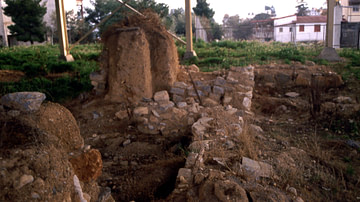
Image
Excavations at Lefkandi
Heroon (Hero's Grave) of Lefkandi, western rooms, from the north, photographed in 1991.
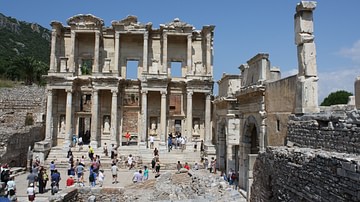
Definition
Library of Celsus
The Library of Celsus in ancient Ephesus, located in western Turkey, was a repository of over 12,000 scrolls and one of the most impressive buildings in the Roman Empire. Constructed in the 2nd century CE, it was named after the city's former...